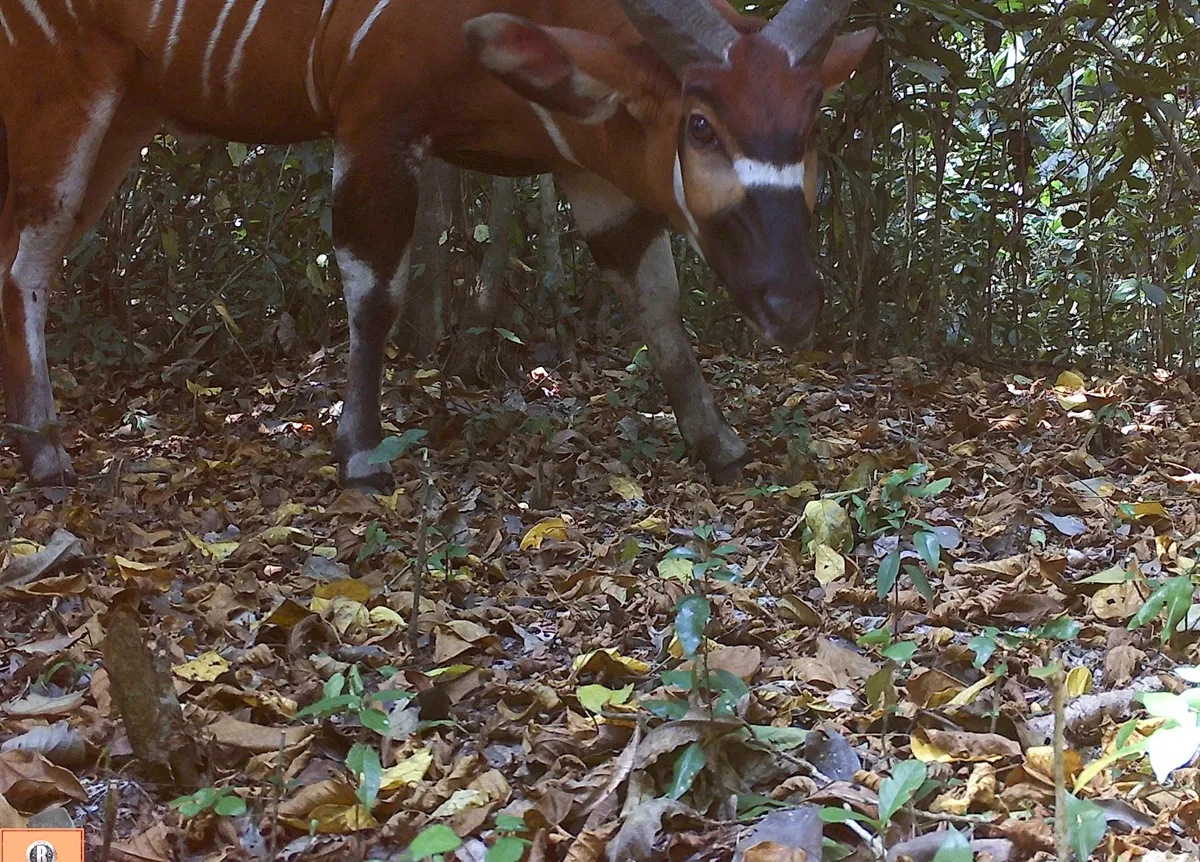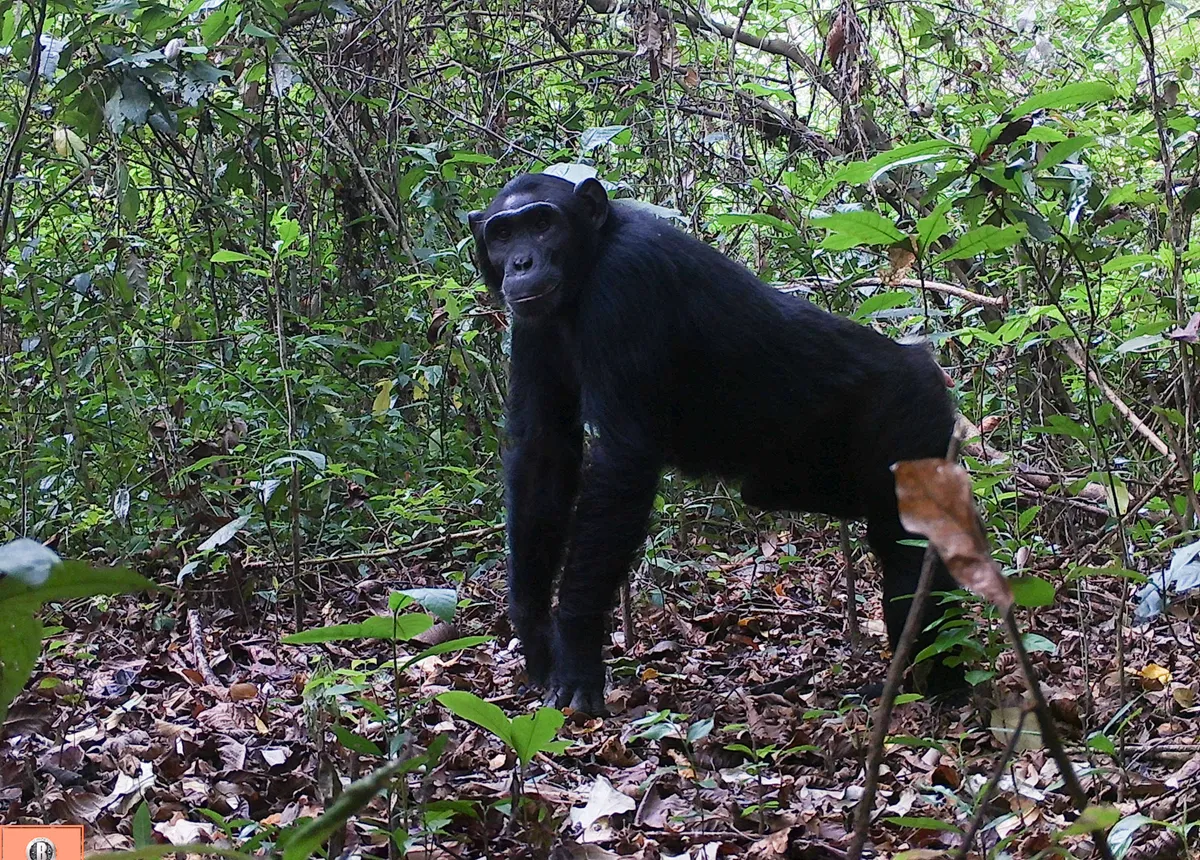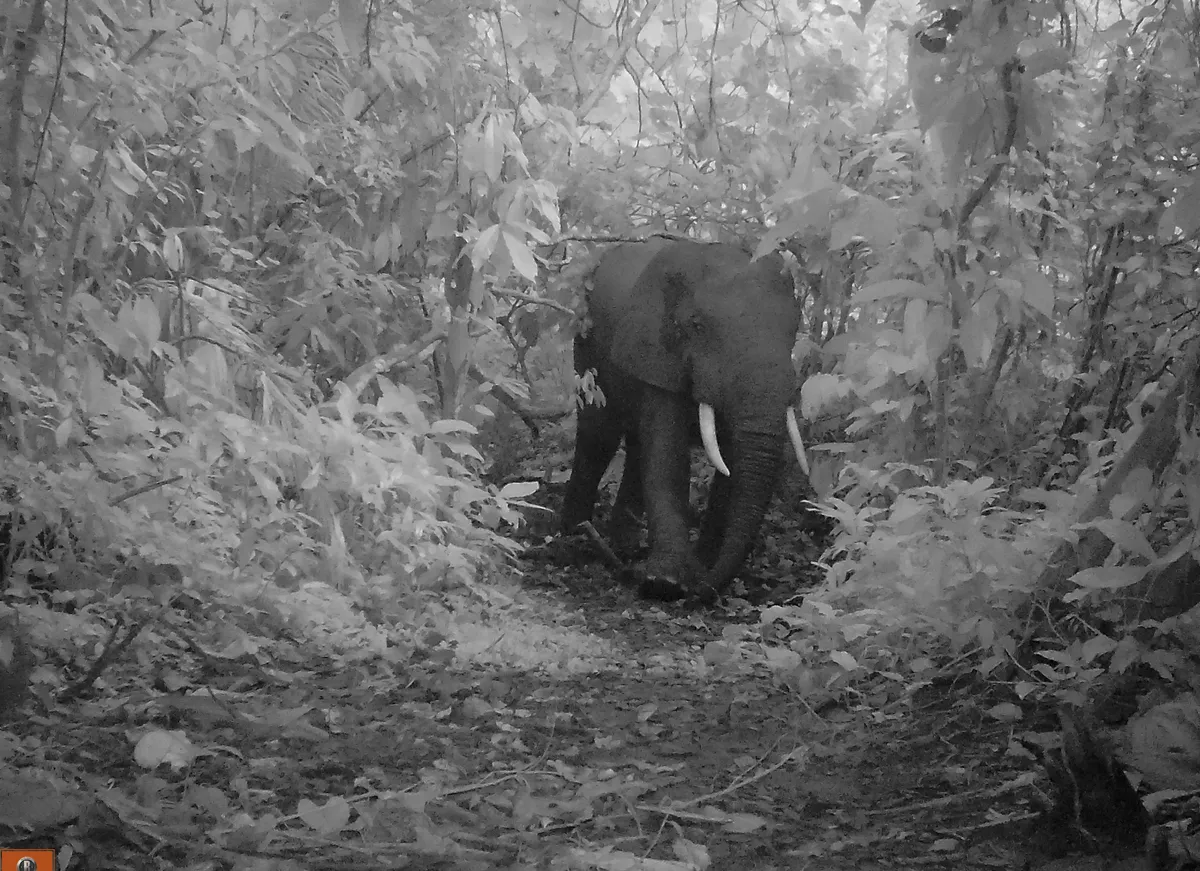The vibrant red-brown and white striped coat and distinctive spiralling horns of the lowland bongo have been recorded in Uganda for the first time.
Conservationists from Chester Zoo have been working in the country to analyse the diversity of mammals in Semuliki National Park, the only true lowland rainforest in East Africa.
“We were amazed that such a large, striking animal could go undetected for so long,” says Stuart Nixon, Chester Zoo’s Africa Field Porgramme Coordination, “but bongo are a notoriously shy and elusive species.”
“It could be that bongo and other species are moving between Virunga National park in DRC and Uganda showing just how important it is to protect the rainforests, which still connect the two countries.”

There are two subspecies of the bongo, Tragelephas eurycerus, an antelope listed as Near Threatened on the IUCN Red List: the mountain or eastern bongo, T.e.isaaci, and the lowland or western bongo, T.e.eurycerus.
With a shoulder height of up to 1.3m and long, spiralling horns that can grow to around a metre in length, the bongo it the world’s largest forest antelope.
Both sexes are similar in appearance, although males are larger and their coat becomes darker with age. The horns of the females tend to be thinner, longer, and more parallel.
“The lowland bongo is rare throughout the forests of western and central Africa and declining due to accelerating illegal hunting and habitat loss,” continues Nixon.
“Unlike the mountain bongo, there are no lowland bongo held in zoos, so any conservation actions can only focus on wild populations. As thrilled as we are with this discovery much more work is needed to learn more about this newly found species in Uganda and elsewhere across its range.”


The survey captured 18,000 pictures in Semuliki National Park, showing 32 different species of mammal – including forest elephants, chimpanzees, buffalos, elephant shrews and African golden cats, plus a number of non-mammalian animals such as palm vultures and Nile monitor lizards.
“The images of the mammal species of other genera captured by cameras show the importance of Semuliki as a biodiversity hotspot,” says Guma Nelson, the chief warden of the Kibale Conservation Area.
“With its proximity to the Pleistocene refugia, there are rare and endemic species yet to be discovered. The large mammals, primates and the birds have all along been the main conservation assets we focus on to protect this forest, in addition to ecosystem services and resources to support community livelihood.”

